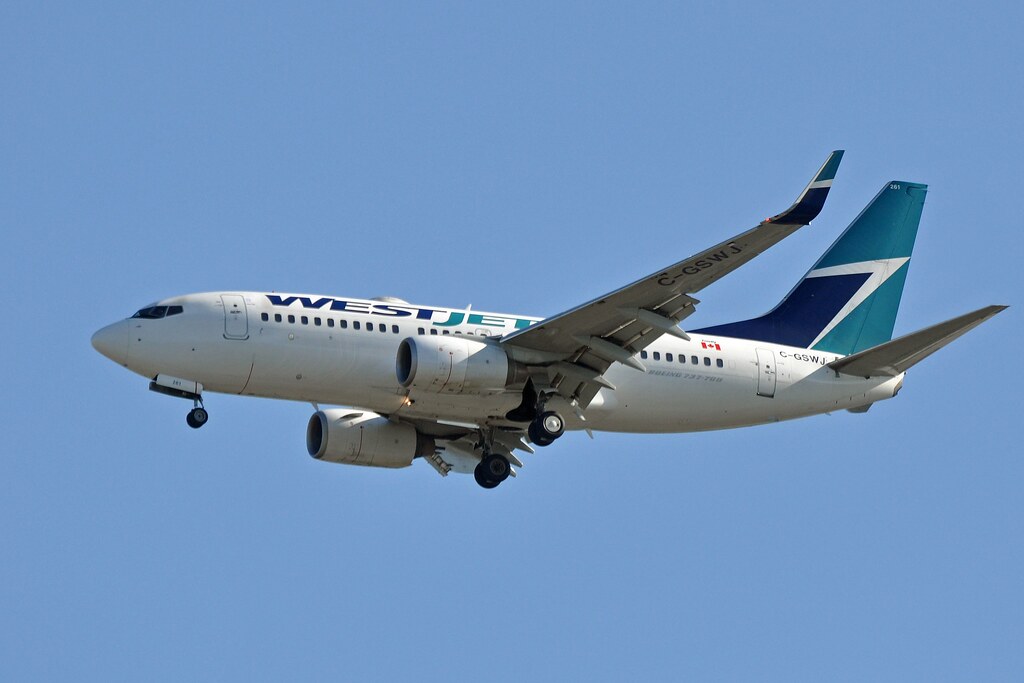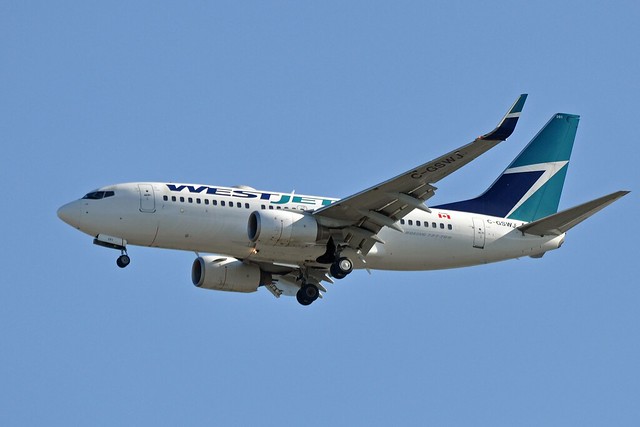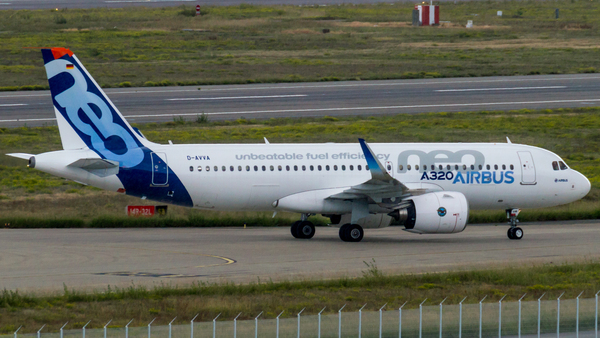Jazz DH8C, Westjet B737 and Westjet B738 at Vancouver on Apr 15th 2011, two aircraft lined up, ATC callsign confusion and loss of separation
Last Update: June 21, 2013 / 14:41:36 GMT/Zulu time
Incident Facts
Date of incident
Apr 15, 2011
Classification
Report
Airline
Jazz Aviation
Departure
Vancouver, Canada
Destination
Nanaimo, Canada
Aircraft Registration
C-GSWJ
Aircraft Type
De Havilland Dash 8 (300)
ICAO Type Designator
DH8C
A Westjet Boeing 737-700, registration C-GSWJ performing flight WS-628 from Vancouver,BC to Toronto,ON (Canada), had been assigned "Georgia 2" SID and was taxiing for departure and had been cleared to line up Vancouver's runway 26L at the threshold and was advised to be number 2 for departure.
A Westjet Boeing 737-800, registration C-GWSX performing flight WS-2057 from Cancun (Mexico) to Vancouver,BC (Canada), was on final approach to runway 26L.
Vancouver's tower controller subsequently cleared "WJA-269" (a combination of WJA-628 and JZA-269) for takeoff from runway 26L without specifying the intersection and instructed the aircraft to follow "Richmond 1" SID. WJA-628 acknowledged the takeoff clearance but queried whether their SID had been changed. The crew of JZA-269 reported to be about halfway down the runway. At this point the controller recognized his mistake, cancelled the previous clearance with neither aircraft having begun a takeoff run and re-issued the clearance to "JZA-269". The Jazz crew commenced their takeoff.
The arriving Westjet was about 2.5nm from touchdown at that point, ATC advised the crew to expect landing clearance at 1nm before touchdown.
About 20 seconds after the Dash 8 had began their takeoff roll, ATC cleared WJA-628 to fly "Georgia 2" SID and cleared the aircraft for takeoff, 6 seconds after the clearance ATC requested "to not delay departure", another 2 second later tower instructed the arriving WJA-2057 to go around and fly a left hand turn without specifying altitude or heading, the aircraft was at 400 feet AGL and 0.9nm from touchdown at that point. Although the crew did not immediately acknowledge the instruction, the aircraft initiated a go around and commenced a left hand turn, then acknowledged the instruction and was instructed to climb to 2000 feet and turn onto 240 degrees. WJA-2057 crossed the threshold of runway 26L at about 800 feet AGL with WJA-628 still on the ground into the takeoff run about 1947 feet down the runway.
Georgia-2 SID would have required WJA-628 to turn onto a heading of 245 degrees above 400 feet AGL. The controller instructed WJA-628 to continue on runway heading and advised departure control of WJA-628 climbing on runway heading and WJA-2057 having gone around climbing to 2000 feet on a heading of 245 degrees.
The controller subsequently handed WJA-269 off to departure, it took several transmissions until the error had been cleared up and JZA-269 changed to departure frequency.
The tower controller now handed JZA-2057 off to departure, the instruction was not acknowledged, WJA-2057 remained on tower frequency.
In the meantime WJA-628 climbed through 2700 feet while WJA-2057 had levelled off at 2000 feet. When WJA-628 changed to departure control the distance between the two Westjet aircraft was 1.6nm horizontally and 700 feet vertically, 10 seconds later WJA-628 climbed through 3200 feet resolving the conflict that way.
JZA-269 and WJA-628 continued to their destinations for safe landings, WJA-2057 positioned for another approach to runway 26L and landed safely on the second approach.
The Canadian TSB released their final report concluding the probable causes of the incident were:
Findings as to Causes and Contributing Factors
- The airport controller’s loss of situational awareness resulted in an operational decision that led to a loss of instrument flight rules separation between WJA628 and WJA2057.
- The airport controller inadvertently mixed up the call signs / flight numbers when issuing the take-off clearance to JZA269. The crew of WJA628 used vague, unclear wording in the attempt to alert the airport controller to the mistaken take-off clearance wording. As a result, there was no longer sufficient time to safely depart WJA628 and allow WJA2057 to land with required separation.
- When providing missed-approach instructions to WJA2057, the airport controller did not provide instructions that would ensure the minimum required separation.
- It is likely that the airport controller was experiencing the effects of fatigue at the time of the occurrence. This would have made it more difficult for the airport controller to recognize the developing situation, and to take timely corrective action to ensure that instrument flight rules separation was maintained.
Findings as to Risk
- If non-standard phraseology is used when multiple aircraft are lined up for take-off on the same runway, there is increased risk of collision due to errors in departure sequencing.
- Controllers receive limited training or simulation on best practices to recover quickly and safely from a serious operational error. As a result, controllers may not be adequately prepared to restore the required instrument flight rules separation and associated safety margins following a risk of collision occurrence.
- When a controller involved in an occurrence is not removed from duty, there is increased risk that the controller’s performance may be degraded due to the stress associated with being involved in an occurrence.
Vancouver was down runway 08L/26R that night due to construction work that commenced at 19:00L. Starting with the midnight shift from 22:30L to 06:30L two controllers were staffing Vancouver tower, one working the ground position and one working the tower position. No supervisor was on duty, nor had a supervisor been scheduled to be on duty.
At the time of the occurrence tower had to control 10 aircraft, 5 arrivals and 5 departures, the traffic situation was considered light and not complex. The TSB stated that the controller used non standard phraseology for his instructions omitting crucial information like threshold or intersection for line up or takeoff clearances.
The incident tower controller had worked shifts on Apr 13th from 06:30L to 14:58L, on Apr 14th from 05:30L to 13:58L and 22:30L to 06:30L and on Apr 15th from 22:30L to 06:30L. He had slept about 6 hours in between the day and night shift of Apr 14th and had slept another 5 hours after completing the midnight shift of Apr 14th. The occurrence happened about 30 minutes after he assumed duty for his midnight shift of Apr 15th.
The TSB analysed: "The TSB’s analysis of the airport controller’s sleep pattern indicated that the airport controller did not obtain sufficient sleep before the occurrence shift, which would likely have contributed to degraded performance. In addition, the airport controller’s schedule did not permit enough adaptation time, due to the requirement to sleep during the day in an attempt to be adequately rested for the night shift."
The controller made an according entry into the tower logbook, however, did not assume this was a reportable incident. The supervisor of next day's day shift checked the logbook entries, determined that the occurrence had been a reportable incident and invoked the relevant procedures.
Analysing supervision the TSB stated: "There was no supervisor on duty in the control tower after 2230, nor was one scheduled. Following the occurrence, the airport controller completed the balance of the shift, and was relieved by the regularly scheduled day shift controller the next morning." and continued later quoting the operations manual: "Employees are to inform their immediate supervisor or manager, as soon as possible, of any reportable occurrence. If the immediate supervisor or unit manager is not available, the ACC shift manager shall be informed ..." and concluded:
The purpose of removing the controller from operational duties is to allow management time to properly analyze the circumstances of an operating irregularity, and to take any action deemed appropriate to reinstate the involved controller. Removal from duty is not intended to be punitive or disciplinary in nature.
Management was not contacted about this occurrence before the end of the midnight shift. Neither controller considered this to be a hazardous situation or a reportable incident. A control tower logbook entry was made, indicating that a missed approach had been directed for an arriving aircraft. After reviewing the recorded information, the day control tower supervisor concluded that a reportable incident had occurred, and took subsequent action in accordance with NAV CANADA policy.
The TSB analysed: "The phraseology error that initiated the sequence of events of this incident was the call-sign/flight-number mix-up. The airport controller inadvertently mixed up the call signs / flight numbers when issuing the take-off clearance. As a result of the confusion and the resulting delay, there was no longer sufficient time to safely depart WJA628 and to allow WJA2057 to land without creating a risk of collision. The controller did not immediately recognize this situation."
The TSB continued that WJA-628 queried their departure route assignment: "The intent of that reply by the crew to the controller was to question which aircraft was meant to be cleared for take-off. However, the crew of WJA628 used vague, unclear wording in the attempt to alert the airport controller to the mistaken take-off−clearance wording. This lack of clarity extended the time before the controller realized the mistake. It was the statement by the flight crew of JZA269, that JZA269 was also on the runway, which made the controller realize that an error had been made. Since neither of the 2 aircraft on the runway commenced a take-off, and the error was almost immediately corrected, there was no risk of collision or loss of separation at that point in the sequence."
The TSB analysed: "There was no supervisor scheduled for duty in the control tower during the night shifts. It was only after the day-shift supervisor came on duty the next morning that the event was reviewed and almost immediately considered significant. An operating irregularity or loss-of-separation occurrence has the potential to affect an individual’s performance in the immediate aftermath, and removal from duty may provide a period of stress relief for the individual. When a controller involved in an occurrence is not removed from duty, there is increased risk that the controller’s performance may be degraded due to the stress associated with being involved in an occurrence."
The TSB concluded the analysis stating the controller was experiencing the results of fatigue: "At any time when individuals are required to work during periods that are significantly in opposition to their normal circadian rhythm, fatigue and its management may become a factor. Trying to get adequate sleep when one’s body is normally in a wakened state is a challenge. Air traffic control (ATC) personnel are given information on recognizing fatigue and given strategies for minimizing its effects. However, it is not always possible for individuals to determine their fatigue level. The airport controller, as shown by the Fatigue Avoidance Scheduling Tool (FAST) analysis, was likely fatigued at the time of the occurrence. This probability of fatigue is consistent with the communication breakdowns observed in this occurrence, and likely also contributed to the breakdown in controller situational awareness. It is likely that the airport controller was experiencing the effects of fatigue at the time of the occurrence. Those effects would have made it more difficult for the airport controller to recognize the developing situation, and to take timely corrective action to ensure that IFR separation was maintained."
Aircraft Registration Data
Aircraft registration data reproduced and distributed with the permission of the Government of Canada.
Incident Facts
Date of incident
Apr 15, 2011
Classification
Report
Airline
Jazz Aviation
Departure
Vancouver, Canada
Destination
Nanaimo, Canada
Aircraft Registration
C-GSWJ
Aircraft Type
De Havilland Dash 8 (300)
ICAO Type Designator
DH8C
This article is published under license from Avherald.com. © of text by Avherald.com.
Article source
You can read 2 more free articles without a subscription.
Subscribe now and continue reading without any limits!
Read unlimited articles and receive our daily update briefing. Gain better insights into what is happening in commercial aviation safety.
Send tip
Support AeroInside by sending a small tip amount.
Related articles
Westjet B737 at Calgary on Jun 26th 2023, rejected takeoff due to bird strike
A Westjet Boeing 737-700, registration C-GSWJ performing flight WS-131 from Calgary,AB to Vancouver,BC (Canada) with 132 passengers and 5 crew, was…
Westjet B737 near Grand Forks on May 19th 2017, odour in cabin
A Westjet Boeing 737-700, registration C-GSWJ performing flight WS-1578 from Calgary,AB (Canada) to Chicago O'Hare,IL (USA), was enroute at FL370…
Jazz DH8D at Calgary on Oct 6th 2023, departed over tugs on runway
A Jazz de Havilland Dash 8-400, registration C-GGNZ performing flight QK-7124 from Calgary,AB to Winnipeg,MB (Canada), was cleared for takeoff from…
Jazz DH8D at Vancouver on Feb 3rd 2025, tyre damage on departure
A Jazz de Havilland Dash 8-400, registration C-GGNZ performing flight QK-8441 from Vancouver,BC to Terrace,BC (Canada) with 72 passengers and 4 crew,…
Jazz CRJ9 at Chicago on Feb 1st 2025, lavatory fire indication on final approach
A Jazz Canadair CRJ-900, registration C-FJZN performing flight QK-901/AC-8901 from Toronto,ON (Canada) to Chicago O'Hare,IL (USA), was on final…
Jazz CRJ9 enroute on Oct 25th 2024, unreliable airspeed, stick shaker, stall fail
A Jazz Canadair CRJ-900, registration C-GLJZ performing flight QK-721 from Toronto,ON (Canada) to Minneapolis,MN (USA), was enroute at FL360 about…
Jazz CRJ9 and India B773 at Toronto on Sep 11th 2024, CRJ9 crossing runway with B773 accelerating for takeoff
A Jazz Canadair CRJ-900, registration C-GJHZ performing flight QK-931 from Philadelphia,PA (USA) to Toronto,ON (Canada), had landed on Toronto's…
Newest articles
UPS MD11 at Louisville on Nov 4th 2025, burst into flames on takeoff
A UPS United Parcel Service McDonnell Douglas MD-11, registration N259UP performing flight 5X-2976 from Louisville,KY to Honolulu,HI (USA) with 3…
India A20N near Bhopal on Nov 3rd 2025, cargo smoke indication
An Air India Airbus A320-200N, registration VT-EXO performing flight AI-2487 from Delhi to Bangalore (India) with 172 people on board, was enroute at…
Subscribe today
Are you researching aviation incidents? Get access to AeroInside Insights, unlimited read access and receive the daily newsletter.
Pick your plan and subscribePartner

ELITE Simulation Solutions is a leading global provider of Flight Simulation Training Devices, IFR training software as well as flight controls and related services. Find out more.
SafetyScan Pro provides streamlined access to thousands of aviation accident reports. Tailored for your safety management efforts. Book your demo today
AeroInside Blog
Popular aircraft
Airbus A320Boeing 737-800
Boeing 737-800 MAX
Popular airlines
American AirlinesUnited
Delta
Air Canada
Lufthansa
British Airways





